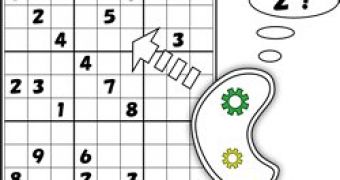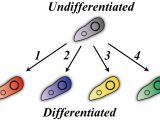Sudoku seems to be a very popular game, and not only among humans, since a strain of Escherichia coli bacteria is now able to solve the logic puzzle, helped by a group of Japanese students, from the University of Tokyo, of course.
The team led by Ryo Taniuchi, started with 16 types of E. coli on a four-by-four Sudoky grid; each colony of bacteria had a different genetic identity, depending on the square it was on.
The bacteria can also have one of four colors (red, purple, yellow and green), to represent the 1 to 4 value of their square.
Like in a regular Sudoku game, a few squares on the grid are given a value from the beginning, by stimulating the bacteria in these squares to differentiate and take one of the four colors.
Taniuchi said that “because Sudoku has simple rules, we felt that maybe bacteria could solve it for us, as long as we designed a circuit for them to follow.”
Once the game has started, the bacteria use RNA recombinases packaged in viruses, in order to send information about their location and their color value, to the undifferentiated bacteria in "unsolved" squares.
The researchers conditioned the E. coli to only accept RNA from cells in the same row, column or block as themselves.
The bacteria receiving the messages is unable to differentiate into the same color as the transmitting bacteria, thanks to the genetic information stored in the viral message, so by using simple elimination, the undifferentiated cells decide what color they should adopt, thus 'solving' the grid.
The experiment worked on a four-by-four grid so by expanding the same principles, 81 types of bacteria should be able to solve a normal nine-by-nine grid, Taniuchi said.
There is nothing new in programming bacteria, but there is a limited amount of DNA that can be inserted into their genome, so spreading the code across several cells, makes more complex programs possible, by creating a distributed network.
The amazing thing is that in this case, the bacteria would be able to solve the puzzle by filling the grid simultaneously, which a human being cannot do.
“If you consider an ant colony, an individual ant isn't very useful,” Martyn Amos at Manchester Metropolitan University, UK, told New Scientist.
“But if you put millions of ants together they're suddenly capable of very rich, very complex population-level behavior; that's what we're trying to harness.”
Martyn Amos at Manchester Metropolitan University, UK, is a member of Bactocom, a project that the EU funded to develop a biochemical computing device.
The Sudoku-solving bacteria competed in the International Genetically Engineered Machine competition at the Massachusetts Institute of Technology last week.

 14 DAY TRIAL //
14 DAY TRIAL // 
